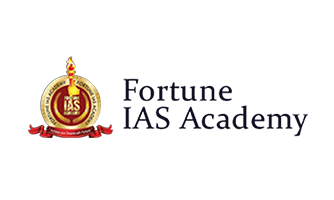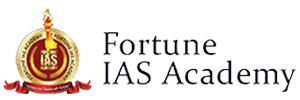Mathematics Optional Syllabus for Civil Service Examination
The Mathematics optional subject consist of two papers and each paper carries 250 marks each. This makes a total of 500 marks for this paper.
Mathematics Optional Syllabus- Paper 1
(1) Linear Algebra
- Vector spaces over R and C,
- linear dependence and independence,
- subspaces, bases, dimension;
- linear transformations,
- rank and nullity,
- matrix of a linear transformation.
- Algebra of Matrices;
- row and column reduction,
- echelon form, congruence and similarity;
- rank of a matrix;
- inverse of a matrix;
- solution of system of linear equations;
- eigenvalues and eigenvectors,
- characteristic polynomial,
- Cayley-Hamilton theorem,
- symmetric, skew-symmetric,
- Hermitian, skew-Hermitian,
- orthogonal and unitary matrices and their eigenvalues.
(2) Calculus:
- Real numbers,
- functions of a real variable, limits, continuity, differentiability, mean value theorem,
- Taylor’s theorem with remainders, indeterminate forms, maxima and minima, asymptotes;
- curve tracing; f
- unctions of two or three variables: limits, continuity, partial derivatives, maxima and minima, Lagrange’s method of multipliers, Jacobian.
- Riemann’s definition of definite integrals;
- indefinite integrals;
- infinite and improper integrals;
- double and triple integrals (evaluation techniques only);
- areas, surface and volumes.
(3) Analytic Geometry:
- Cartesian and polar coordinates in three dimensions,
- Second degree equations in three variables,
- reduction to canonical forms,
- straight lines,
- shortest distance between two skew lines;
- plane, sphere, cone, cylinder, paraboloid, ellipsoid, hyperboloid of one and two sheets and their properties.
(4) Ordinary Differential Equations:
- Formulation of differential equations;
- equations of first order and first degree,
- integrating factor; orthogonal trajectory;
- equations of first order but not of first degree,
- Clairaut’s equation,
- singular solution.
- Second and higher order linear equations with constant coefficients, complementary function, particular integral and general solution.
- Second order linear equations with variable coefficients, Euler-Cauchy equation;
- determination of complete solution when one solution is known using method of variation of parameters.
- Laplace and inverse Laplace transforms and their properties;
- Laplace transforms of elementary functions.
- Application to initial value problems for 2nd order linear equations with constant coefficients.
(5) Dynamics & Statics:
- Rectilinear motion, simple harmonic motion, motion in a plane, projectiles;
- constrained motion;
- work and energy, conservation of energy;
- Kepler’s laws, orbits under central forces.
- Equilibrium of a system of particles;
- work and potential energy, friction;
- common catenary;
- principle of virtual work;
- stability of equilibrium, equilibrium of forces in three dimensions.
(6) Vector Analysis:
- Scalar and vector fields,
- differentiation of vector field of a scalar variable;
- gradient, divergence and curl in cartesian and cylindrical coordinates;
- higher order derivatives;
- vector identities and vector equations.
- Application to geometry:
- curves in space, curvature and torsion;
- Serret-Frenet’s formulae.
- Gauss and Stokes’ theorems,
- Green’s identities.
Mathematics Optional Syllabus- Paper 2
(1) Algebra:
- Groups, subgroups, cyclic groups, cosets, Lagrange’s Theorem, normal subgroups, quotient groups, homomorphism of groups, basic isomorphism theorems, permutation groups, Cayley’s theorem.
- Rings, subrings and ideals, homomorphisms of rings;
- integral domains, principal ideal domains, Euclidean domains and unique factorization domains;
- fields, quotient fields.
(2) Real Analysis:
- Real number system as an ordered field with least upper bound property;
- sequences, limit of a sequence, Cauchy sequence, completeness of real line;
- series and its convergence, absolute and conditional convergence of series of real and complex terms, rearrangement of series.
- Continuity and uniform continuity of functions, properties of continuous functions on compact sets.
- Riemann integral, improper integrals;
- fundamental theorems of integral calculus.
- Uniform convergence, continuity, differentiability and integrability for sequences and series of functions;
- partial derivatives of functions of several (two or three) variables, maxima and minima.
(3) Complex Analysis:
- Analytic functions, Cauchy-Riemann equations, Cauchy’s theorem, Cauchy’s integral formula, power series representation of an analytic function, Taylor’s series;
- singularities;
- Laurent’s series;
- Cauchy’s residue theorem;
- contour integration.
(4) Linear Programming:
- Linear programming problems, basic solution, basic feasible solution and optimal solution;
- graphical method and simplex method of solutions;
- duality.
- Transportation and assignment problems.
(5) Partial differential equations:
- Family of surfaces in three dimensions and formulation of partial differential equations;
- solution of quasilinear partial differential equations of the first order, Cauchy’s method of characteristics;
- Linear partial differential equations of the second order with constant coefficients, canonical form;
- equation of a vibrating string, heat equation, Laplace equation and their solutions.
(6) Numerical Analysis and Computer programming:
- Numerical methods:
- solution of algebraic and transcendental equations of one variable by bisection, Regula-Falsi and Newton-Raphson methods;
- Solution of system of linear equations by Gaussian elimination and Gauss-Jordan (direct), Gauss-Seidel(iterative) methods.
- Newton’s (forward and backward) interpolation, Lagrange’s interpolation.
- Numerical integration: Trapezoidal rule, Simpson’s rules, Gaussian quadrature formula.
- Numerical solution of ordinary differential equations: Euler and Runge Kutta-methods.
- Computer Programming: Binary system; Arithmetic and logical operations on numbers; Octal and Hexadecimal systems; Conversion to and from decimal systems; Algebra of binary numbers.
- Elements of computer systems and concept of memory; Basic logic gates and truth tables, Boolean algebra, normal forms.
- Representation of unsigned integers, signed integers and reals, double precision reals and long integers.
- Algorithms and flow charts for solving numerical analysis problems.
(7) Mechanics and Fluid Dynamics:
- Generalised coordinates;
- D’ Alembert’s principle and Lagrange’s equations;
- Hamilton equations;
- Moment of inertia;
- Motion of rigid bodies in two dimensions.
- Equation of continuity;
- Euler’s equation of motion for inviscid flow;
- Stream-lines, path of a particle;
- Potential flow;
- Two-dimensional and axisymmetric motion;
- Sources and sinks, vortex motion;
- Navier-Stokes equation for a viscous fluid.
Practicing previous year question papers and attending mock test can help you in conquering top score in the Mathematics civil service optional paper.


